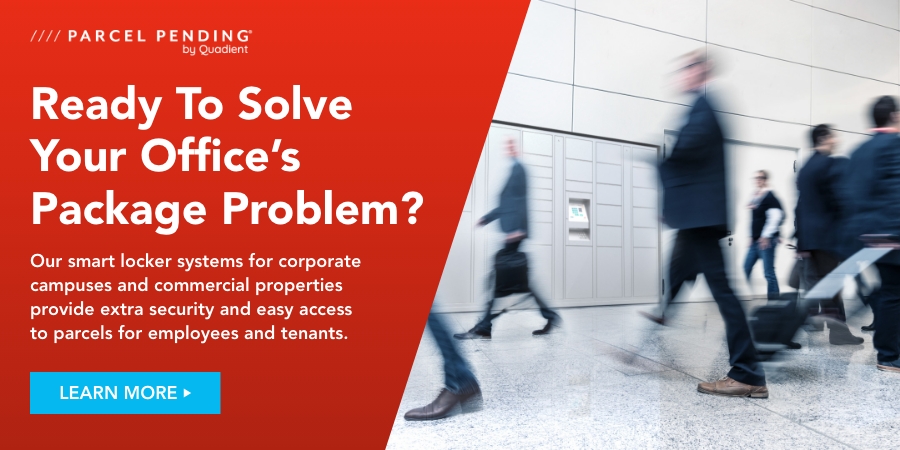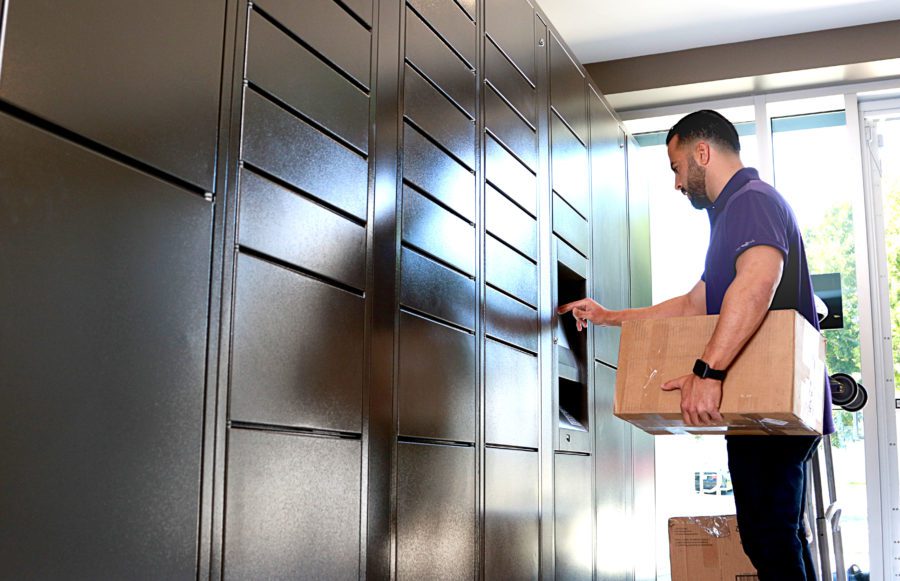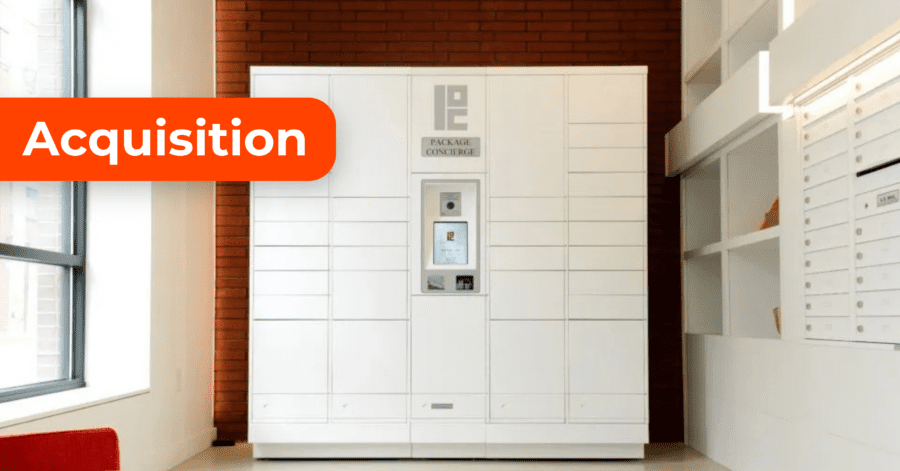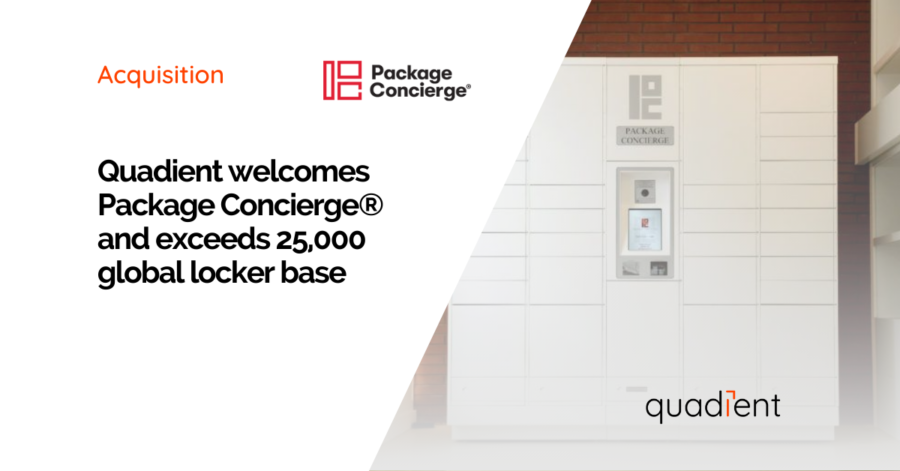
Commercial
Suggestions to Improve Office Efficiency
Written by: Parcel Pending
10 Min Read
Published: April 10, 2019
Updated: February 4, 2024
How to improve office efficiency in business seems to be an age-old question with many possible answers. Varied company cultures and business models mean there isn’t a one-size-fits-all answer to increasing productivity. However, as a business owner, you generally want to enhance your office efficiency and employ self-directed, skilled, and happy employees.
The following are nine suggestions to improve workplace productivity, thus boosting employee efficiency, and reducing operational costs in the workplace.
1. Create a Welcoming Workplace
Don’t forget that your team members are people who perform their best work in a relaxed workplace. The office doesn’t have to be the happiest place in the world to work, but at the very least, it should be pleasant enough to inspire workplace productivity. Creating a welcoming office space is a simple first step to boosting workplace efficiency. Here are a few ideas for enhancing your office design, uplifting spirits, and improving work efficiency and productivity:
- Beautify common areas — Make walking into the office exciting by sprucing up the interior design of the lobby and break rooms. Plants, artwork, or updated furniture can beautify your office decor.
- Let employees bring pets to work — Interacting with animals has been shown to decrease stress levels and improve employee morale. Allowing pets at work creates a comfortable office environment and often results in more productive and happier employees.
- Foster friendships — Developing bonds between colleagues promotes teamwork and improves communication. You can achieve this by hosting office socials or starting out meetings with short icebreakers.
2. Modernize Your Mailroom
Generally, when organizations look for ways to improve office efficiency, they often overlook the mailroom. However, the increased popularity of online purchases by employees while at work has created new problems, including overflowing office mailrooms, that companies need to address.
Frequent online shoppers have realized that shipping packages to their homes is no longer as convenient as it once was. If no one is home to receive a package, it may be rerouted to the post office for pick up, or it may be stolen if left out on the doorstep. Therefore, many employees choose to ship their online purchases to their offices where they can easily pick them up during work hours, avoiding potential delays or theft.
Traditional mailrooms are not equipped to handle this large volume of deliveries, which is why modernizing your mailroom is a must. Integrating self-service electronic parcel lockers takes the burden off property managers, mailroom staff, and employees. Workers are notified via text, email, or app when their packages are securely stored in their lockers. They can retrieve them at their earliest convenience by entering their unique access codes.
Parcel lockers help workflow efficiency by:
- Eliminating the time-wasting process of accepting, logging, sorting, and distributing packages
- Improving office space utilization
- Reducing package delivery times
- Giving staff members one less thing to worry about at work, which will likely increase their productivity
3. Invest in Training and Development
Learning on the job may be effective for highly astute workers but for most people, learning by doing may not be very effective. If you find yourself constantly answering simple questions about your business processes, correcting errors, or noticing substandard work, you likely need to invest more in employee training and development. After all, a well-trained workforce is the foundation for increasing employees’ productivity.
It really is worth it to spend a day or two guiding new employees through what you expect of them and teaching them the skills they need for their jobs. Their subsequent self-sufficiency will more than make up for the productivity lost to the training day.
However, growth shouldn’t stop after orientation. You can support employee development by offering individual coaching, shadowing or mentoring opportunities, or even just gradually introducing them to greater responsibilities. Additionally, you can encourage staff members to attend seminars, courses, or workshops that are relevant to their work. Not only will investing in your employees improve work efficiency, but it will also improve employee satisfaction.
Advanced Training
Employees who consistently perform their duties well may be up for a new challenge: cross-training. The cross-training strategy broadens workers’ skillsets and increases overall team productivity. Your business workflow can fall apart when an employee with special skills calls in sick or takes time off for vacation. But that won’t happen if cross-trained workers are equipped to fill in. This is also useful during busy periods at work when you may need multiple people to complete a project.
A bonus is that workers who are bored with their everyday duties can become re-energized by learning something new. They may even discover they excel in other areas, boosting their confidence along with increasing productivity.
4. Make Your Goals “SMART”
In any context, setting goals is imperative for teams to produce results. The players on your favorite football team understand which goal they’re aiming for; you should manage the team members in your office the same way. If a goal is unclear or unattainable then employee productivity will suffer.
To get the most out of your goals you should focus on making them “SMART”: specific, measurable, attainable, relevant, and timely.
- Specific – The narrower the goal, the easier staff members can understand it. Team communication is key. You need to let your employees know exactly what you expect of them and the intended impact of their efficiency at the office.
- Measurable – If the goal isn’t measurable, how will you know when you have achieved it? Assign objective key performance indicators to your goal so that you can track your progress toward it.
- Attainable – Don’t waste time chasing a goal that isn’t within your power — or your employees’ power — to achieve. Craft a challenging goal that adds value to your work but doesn’t set your team up for failure. If it doesn’t seem realistic, reevaluate the specifics.
- Relevant – Ensure the goal is worthwhile by asking how it will contribute to your office’s overarching mission.
- Timely – Give your workers a deadline to meet the goal so that they don’t continue to push it to the bottom of their to-do lists. Setting short-term goals is essential to meeting long-term goals. However, be careful not to make your short-term goals too short-term because it will only hurt employee morale if your team repeatedly misses deadlines.
5. Communicate Clearly
Technology has completely transformed the ways you can communicate with your team members to boost office efficiency. But even though you can deliver your message within seconds via email, are you conveying that message accurately? Is email even the best communication channel? To improve work efficiency, you should carefully review your communication style.
In some workplaces, reading and responding to emails takes up roughly a quarter of workers’ shifts. This means it is the most time-consuming activity right after job-specific tasks. To optimize the flow of information, try these suggestions:
- Be clear about how you want your staff members to respond to your messages. Are you asking for a thought-out response, or will a quick confirmation of receipt do the job? Perhaps you are only sending out a reminder and no action is required. Communicate that information so workers can focus on other tasks.
- Turn to office productivity tools, such as Slack, for faster, casual responses. Rely on emails for sharing large files or for more formal communication.
- Communicate verbally. Although you won’t have a written record to refer to, you can often take care of business faster with a quick meeting or phone call.
Keep Meetings Focused
When you conduct a meeting, be sure to focus on your objective and get straight to the point. Draw up an agenda and stick to it. Ensure you convey your message efficiently. Workers lose precious time being stuck in unproductive meetings. Bonus: hold stand-up meetings as they feel more like team huddles than sit-downs. Not only are they healthier, but they also deter long-winded talks. When your legs start tiring, you’ll know that you have exhausted your meeting time.
6. Encourage Feedback
It may seem obvious, but your employees’ productivity will increase if they know they’re not working efficiently. Consequently, feedback is crucial. Employee performance reviews are useful to assess their strengths and weaknesses. However, when you provide feedback don’t just point out your workers’ inefficiencies. Rather, include guidance on the ways they can improve their performance. Don’t forget to praise your employees for their creativity. This will improve job satisfaction.
Office efficiency is not completely determined by your workers’ productivity—you should be asking yourself what you can do to manage more effectively. Pinpointing areas of self-improvement can be difficult, especially when you feel that you are putting forth your best effort. Even the most experienced professionals benefit from advice.
The answer is to receive feedback from your employees. After reviewing their performance, give them the chance to express what they would like from you. At first, employees may be reticent to offer feedback because they may not want to offend you.
You can also use social media as a tool to give and receive feedback. Social media enables you to quickly access and process feedback, so you can overcome any problems and get on with the tasks at hand.
Here are a few questions you can ask to ease them into the conversation:
- Are there certain work processes you would like more guidance on?
- Can you be a more productive person if you have greater creative freedom?
- Are there any issues in the office that haven’t been addressed? Or if they have been addressed, are you happy with the solutions?
Answers to these questions will give you a better understanding of how you can contribute to improved office efficiency. They also encourage a company culture of open dialogue.
7. Strategically Delegate
Delegating is fundamental to running a business and it’s often equated with assigning tasks to workers. However, strategic delegating is more thoughtful, requires more planning, and results in greater productivity.
Play to Their Strengths
An extreme example of skill-task mismatch would be asking your lead data analyst to make coffee runs. You wouldn’t delegate a task to an employee if that task didn’t fit their job description, and you also shouldn’t give assignments that don’t fit their skill sets. Take advantage of your workers’ strengths to maximize employee efficiency. For example, your creative and extroverted employee may be great at pitching new ideas to clients, but they may be challenged by tasks with stringent guidelines.
Trust in Your Employees
A common cause of inefficiencies is micromanagement. It’s important to review employee performance to ensure high-quality work but scrutinizing all your team‘s activities is more harmful than helpful. Trust that your team is prepared and allow team members space to do their jobs. You can delegate quality control to your workers. Not only will you be able to focus on more important business, but your employees will also learn ways to assess their work and focus on their tasks.
8. Reward Efficiency
Reinforce productive behavior by providing incentives to your employees for finishing their tasks. Hard work should be rewarded by more than just a paycheck. This will motivate continued productivity, prevent worker burnout, and result in better employee engagement. Traditionally, pay bonuses and promotions were ways to recognize a job well done. However, you can make workers feel appreciated with more sustainable methods. Consider these ideas:
- Throw project wrap parties during work hours to unwind after surviving crunch time.
- Offer concert tickets or seats at local sporting events to your most productive employees.
- Award additional paid time off for completing tasks early.
- Bring in special breakfast treats for after productive early meetings.
- Organize friendly competitions between colleagues.
- Host lunch, dinner, or happy hour outings.
- Share their successes with your boss. CC’ing your boss in the thank you email can strengthen your employees’ pride in their work.
- Tailor your appreciation to individuals for their work. Some prefer public recognition while others value private “thank yous” or handwritten notes.
- Allow remote work a few days a month.
- Let workers take short social media breaks. Allowing employees to log onto their favorite social media platforms for five or 10 minutes to catch up with friends or watch a funny video or two provides a great distraction from the stresses of work.
Get creative and shower your employees with praise when they deserve it. The more satisfied your workers are, the more dedicated and productive they will be.
9. Encourage Deep Work
Cal Newport first coined the term “deep work” in his book, “Deep Work: Rules for Focused Success in a Distracted World,” published in 2016. Deep work is a set of “professional activities performed in a state of distraction-free concentration that push your cognitive capabilities to their limit,” according to Newport, a computer scientist at Georgetown University.
However, for employees who spend much of the workday multitasking, it’s not easy to find a block of time to focus on important tasks that need their undivided attention. Since getting in that deep work zone is just about impossible, multitasking employees are often less likely to produce quality work.
Deep work contributes to employee creativity and productivity as well as increased workplace efficiency. As such, managers must collaborate with the leadership team to create a work environment where team members feel comfortable taking short breaks. If workers are meeting their goals and deadlines, you should encourage them to work in ways that help them increase their productivity.
That might mean allowing remote work from time to time or implementing flex time, which enables managers and employees to work together on a schedule that accommodates the workers’ lives.
Deep work isn’t a trend but rather a philosophy that requires a shift in thinking to encourage ways for team members to focus on completing key tasks or projects without disruptions.
The Bottom Line
There are many different strategies you can use to improve office efficiency. A review of the ones suggested here are:
- Create welcoming workspaces
- Modernize your mailroom
- Invest in training and development
- Make your goals SMART
- Communicate clearly
- Encourage feedback
- Strategically delegate
- Reward efficiency
- Encourage deep work
You don’t need to implement all of them at once but try a few at a time to see how your office can benefit from the changes. Perhaps only one implementation will streamline productivity and boost efficiency in a way you never thought possible. The fact is this: improving office efficiency usually boils down to gradual, subtle changes. But first, it starts with you.
To discover how a Campus Hub office locker solution can help streamline your office efficiency, contact a Parcel Pending by Quadient representative today!
Sources:
- MHC Automation. How to Improve the Efficiency of Your Office. (2018, May 3). https://www.mhcautomation.com/blog/improve-efficiency-office/
- Hicks, Alexandra. Workest by Zenefits. Top 10 Ways to Improve Employee Efficiency. (2021, May 6). https://www.zenefits.com/workest/top-10-ways-to-improve-employee-efficiency/
- Kramer, Mary Hope. LiveAbout. Pros and Cons of Bringing a Pet to Work. (2018, October 21). https://www.liveabout.com/pros-and-cons-of-bringing-your-pet-to-work-125561




